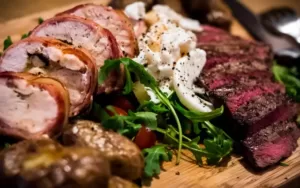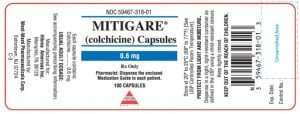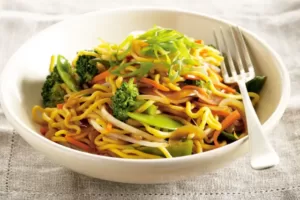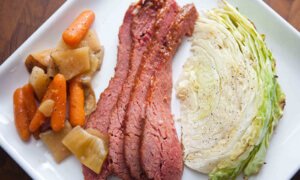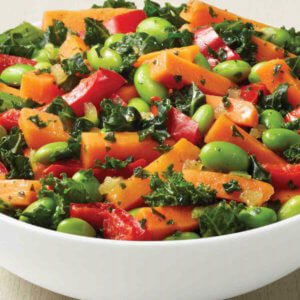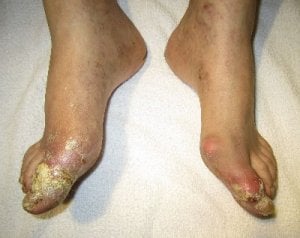Legumes and gout is today’s top gout search topic. It is #84 in the Gout and You countdown.
Legumes are a plant family where seeds grow in pods that split in two. These seeds might be eaten fresh, or dried. Often whole beans, including the pods are used. I have produced a Gout Foods Table for Legumes in the gout diet section. In this article, I will look at legumes as gout home remedies.
I know of two relevant investigations into legumes as gout home remedies. Unfortunately, we do not yet have clear rules for how best to use legumes as gout treatment. However, we do have enough information to be reasonably certain that legumes are a potential source of drug-based or alternative treatment.
In 2001, Evaluation of the Antioxidant Activity of Legumes investigated the properties of 4 different legumes:
- Mung bean (Phaseolus radiatus L.)
- Adzuki bean (Phaseolus aureus Roxb.)
- Black bean (Glycine max (L.) Merr.)
- Rice bean (Phaseolus calcaratus Roxb.)
Hot water extracts of all beans were prepared by boiling 100g in 1 liter of water for 1 hour. This is similar to the, now famous, recipe for Black Bean Broth as a natural gout remedy. The researchers reported that all extracts inhibit xanthine oxidase, which is the enzyme responsible for converting purines to uric acid. Unfortunately, this is not a gout-specific investigation, and it is mice-based rather than human. However, it does tell us that the active ingredients in legumes can be extracted using home methods.

The second investigation, in 2012, is more relevant to gout, though aimed at finding new drug sources rather than home remedies. In Flavonoid Glycosides Isolated from Unique Legume Plant Extracts as Novel Inhibitors of Xanthine Oxidase, the researchers extracted active ingredients from 2 legumes:
- Fava Bean or broad bean (Vicia faba)
- Edible Bird’s-Foot Trefoil or birdsfoot deer vetch (Lotus edulis)
In this experiment, the whole plant except roots was dried and pulverized. The extraction process for active ingredients was complex and only suitable for laboratory or industrial settings. Both kaempferol and quercetin extracts proved to be potent inhibitors of xanthine oxidase.
In their discussion of results, the authors note other research that has revealed dietary inhibition of xanthine oxidase from plant compounds. They also note:
These molecules are natural products that possibly lack the side effects of allopurinol. […] these flavonoid isolates and the initial extracts and fractions may be used as antioxidant, nutritional supplements. […]flavonoid isolates from fractions derived from legume plant extracts are novel, natural XO inhibitors. Their mode of action is under investigation in order examine their potential in drug design for XO related diseases such as gout. Considering that legumes have beneficial health implications, they may be used as dietary supplements.
They warn that such supplements may be best avoided before exercise as uric acid has been found to be beneficial to reduce harmful effects of exercising.
If you try legumes as gout home remedies, please share your experiences in the gout support forum.
Next, in this series, #83, will be available soon. Please subscribe to my gout information update service to get informed when I publish it:
Leave Legumes and Gout to browse Gout Home Remedies guidelines
Please give your feedback
Did this page help you? If yes, please consider a small donation. Your donations help keep GoutPal's gout support services free for everyone.
If not, please tell me how I can improve it to help you more.
- YouTube
- The gout forums.


